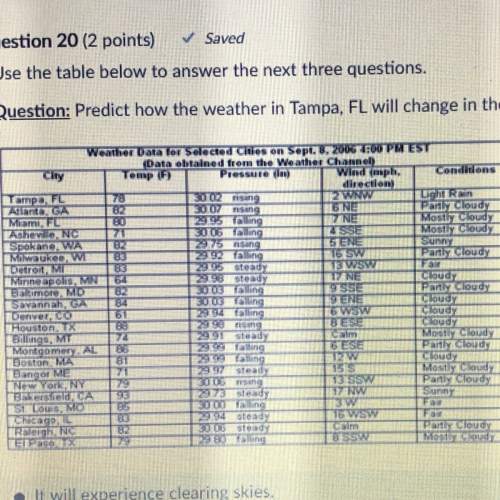
Physics, 17.12.2019 02:31 hipeopleitsme121
The motion of a particle is given by the equation v = 8t3 – ½ t2 + 4t, where v is in meters and t is in seconds. compute the value of a at t=0. i got 98 m/s^2 but the answer key says 50m/s^2 so i think it must have been a typo. can someone check?

Answers: 3


Another question on Physics

Physics, 21.06.2019 15:00
Using software, a simulation of a javelin being thrown both on earth and on the moon is created. in both cases, the velocity and angle of projection are kept the same. on earth, the javelin covers a distance y. what distance would it cover on the moon? (the moon’s gravity is about 1/6th that of earth.) a. 6y b. 6/y c. y/6 d. (y+6)2
Answers: 3

Physics, 21.06.2019 19:00
When the velocity of an object is doubled, by what factor is its momentum changed? by what factor is its kinetic energy changed? a) the momentum is zero. b) the momentum is not zero. c) difficult to say.
Answers: 3

Physics, 21.06.2019 19:30
The lights used by mark watley (played by matt damon) during the film the martian seem to be metal halide lamps. metal halide lamps are filled with vaporized mercury and metal-halogen compounds. when an electric current is passed through the lamp, the tube begins to glow a bright white/blue color. if you were to pass this light through a prism to separate the individual light frequencies, you would see a rainbow just as you would if using natural sunlight because of the complexity of the metal halide gas and the vast amount of possible electron transitions. (the study of light in this way is known as spectroscopy and allows astronomers to know exactly what atoms compose distant stars, simply by looking at the light they emit. the spectral lines an atom produces uniquely identifies that atom just like a fingerprint uniquely identifies a person. the momentum equation and energy equation that we have used above can be combined to give the following equation: c = e p where again p is the phonon momentum, e is the photon energy and c is the speed of light. when you divide the photon energy found in #6 by the photon momentum found in #4, do you get the speed of light? (if not, check your work for questions #4 through #6). yes no
Answers: 2

Physics, 22.06.2019 01:30
For problems 1-3, consider a simple dc brush motor with a permanent magnet stator. with an an consider a simple dc brush motor with a permanent magnet ae supply voltage of 100 v, the no-load speed of the motor is 1000 rpm. this motor can provide a torque of 1.9 n-m at 800 rpm drawing a current of 2 a current are both zero at no load.) 1. with an armature supply voltage of 100 v, the motor is operated at 900 rpm. what is the motor torque? what is the mechanical power delivered by the motor? what is the current draw? what is the electrical power input? what is the energy efficiency of the motor? with an armature supply voltage of 100 v, the motor is operated at 1100 rpm (where it acts as a generator). what torque input is required? what mechanical power is required what current is generated? what is the electrical power generated? what is the energy efficiency of the motor acting as a generator? 2. with an armature supply voltage raised to 120 v, the motor is operated at 1000 rpm. what is the no-load speed? what is the motor torque? what is the mechanical power delivered by the motor? what is the current draw? what is the electrical power input what is the energy efficiency of the motor? 3.
Answers: 3
You know the right answer?
The motion of a particle is given by the equation v = 8t3 – ½ t2 + 4t, where v is in meters and t is...
Questions




Advanced Placement (AP), 25.07.2019 05:00

History, 25.07.2019 05:00






Physics, 25.07.2019 05:00

Chemistry, 25.07.2019 05:00

Physics, 25.07.2019 05:00

Mathematics, 25.07.2019 05:00

Mathematics, 25.07.2019 05:00



Mathematics, 25.07.2019 05:00


English, 25.07.2019 05:00





